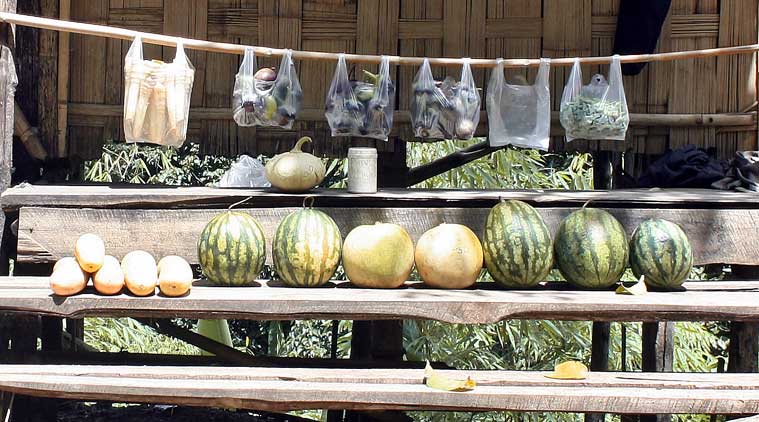Heading towards a cliff: Learnings from three months of reportage from the state.
The idea was to create a snapshot of the state and its people at this point in time, to try and understand the major forces shaping the lives of the people in the state. Twelve articles later, what have we learnt?
We learnt, principally, that the state is heading towards a cliff.
As one of our first stories observed, Mizoram has very little industrial activity. As much as 90% of its revenues come from the central government. In such a setup, the state government is the biggest economic engine in the state.
And over the years, state politicians have become adept at using the state's resources to win support by doling out patronage. Voters are doled out cash through the state's principal rural development programme – the New Land Use Policy. As for party workers, they are kept satisfied, as this article described, by slipping road contracts to them.
Over the years, however, the state government's expenditure on itself – paying staff salaries, interest on the loans it has taken, subsidies for the doles it gives – have risen so high that the state is now struggling to provide essential services to its people.
This was starkly evident in the stories that Scroll wrote on the state's faltering HIV and public health programmes. The state government's monthly expenses are so much higher than its monthly incomes that it has to divert money meant for, say, healthcare towards meeting more pressing administrative expenses like salaries and interest payments.
The fallout? Payments to the state health programme are badly delayed. The mandarins in charge end up making hard choices on what to fund – staff salaries or immunisation. These delays are taking a huge toll on the state. Its anti-AIDS programme, for instance, is losing the battle against the disease.
The state's people are suffering too. While reporting from Mizoram, Scroll met numerous teachers, forest guards and others who had not been paid for six or so months. One teacher Scroll met in Lawangtlai town, T Lalremliama, had begun driving an auto to make ends meet.
The paradox
It is a paradoxical situation. The state government spends so much on itself that it has little money for the people of Mizoram.
This pattern shows up even more starkly when you look at the financials of the autonomous tribal councils in southern Mizoram. In the Lai and Mara councils, so much money goes into staff salaries that literally zero rupees is left for actual development work – in these councils, voters are won over by promising them jobs in the district councils. (When the locals protest, the council leaderships blame the state's Mizo population. A fissure that the Bharatiya Janata Party was wondering how to exploit.)
Across Mizoram, with little industry, jobs are hard to come by. Whenever any new economic livelihood opened up, as the story on the Korean wave in Mizoram showed, a lot of people would rush into it. Similarly, one would keep encountering graduates driving cabs.
Staying there, it appeared that one reason discontent was low was the strong role of the Church in daily life.
However, things are now reaching a denouement of sorts. After the 14th Finance Commission, the funds available with the state government will come down steeply. This leaves the state government facing a hard question. Will it cut back on patronage while protecting welfare expenditure? If so, what happens to its support bases?
As things stand, the state population has got used to the idea of government handouts in the form of programmes like the New Land Use Policy. State mandarins, around the time I left, were starting to clamour for the Seventh Pay Commission.
In the months ahead, will the Mizoram government steer a more prudent course?
Source: scroll.in














